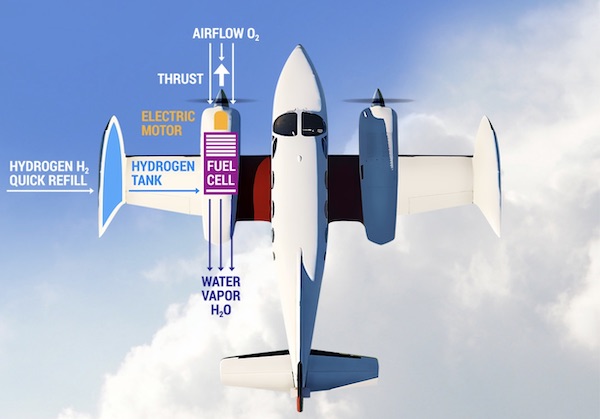An Historic Hydrogen Outing While Airbus and MagniX promote the near- and not-so-near virtues of hydrogen-powered flight, ZeroAvia has demonstrated such flight with the largest H2-powered aircraft so far. Their Cranfield, England-based Piper Malibu flew on H2 power for the first time September 24 on an eight-minute circuit. The blue Malibu reached 1,000 feet and a top speed of 100 knots true air speed. Quick to capitalize on the successful mission, , ZeroAvia founder and CEO Val Miftakhov held a press conference the next day. In it, he explained his team,“has had discussions with seven aircraft manufacturers about possible retrofit and new-build applications for the propulsion system. He said the company has signed letters of intent with 10 airlines that have expressed an interest in the program based on presentations made to around 30 different prospective operators.” Earlier flights in Hollister, California and Cranfield were battery powered “to evaluate different elements of the powertrain.” Unspecified modifications helped prepare the craft …
Fuel Cell Progress in Britain
The National Renewable Energy Laboratory in Golden, Colorado released a document last year on the viability of fuel cells for various applications, including transportation. The National Fuel Cell Electric Vehicle Learning Demonstration Final Report, “analyzed data from more than 500,000 individual vehicle trips covering 3.6 million miles traveled and more than 152,000 [kilograms] hydrogen produced or dispensed.” The agency tested 180 vehicles over a six-year period. With United States Department of Energy expectations that fuel cell powered vehicles could achieve: • 250-mile driving range • 2,000-hour fuel cell durability • $3/gallon gasoline equivalent (gge) hydrogen production cost (based on volume production) At least two fuel cell manufacturers report results exceeding these numbers, so the major impediment to wide-spread implementation of this clean technology seems to be lack of an effective distribution network. The NREL lists 54 existing H2 sites, with 15 projected for the near future, nowhere near the estimated 159,000 outlets (including convenience stores) that sell gasoline and other …

